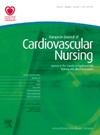Comprehensive assessment of the results of zorba dance-based rehabilitation in patients after myocardial infarction
IF 2.9
3区 医学
Q2 CARDIAC & CARDIOVASCULAR SYSTEMS
引用次数: 0
Abstract
Introduction Dance movement engages global muscle sequences of the human body, improves physical performance, and helps reduce stress and excessive muscle tension. Dance exercises allow you to better control your movement and muscles. Zorba Greek dancing as a form of physical activity brings benefits in the form of improved mental health, well-being and quality of life. Rehabilitation may contribute to improving cardiorespiratory fitness and mental condition in the group of patients after myocardial infarction. Aim of the study The aim of the study was to evaluate a rehabilitation program based on Zorba dance on selected clinical parameters in patients after myocardial infarction. Materials and methods The study included 99 patients after myocardial infarction who were rehabilitated for 5 weeks. Patients were enrolled into two groups. Group I (50 patients) performed cycle ergometer training and the Greek dance Zorba. Group II (49 patients) performed cycle ergometer training and rehabilitation exercises. At the beginning and after rehabilitation, patients' BMI, balance (scales: Tinetti, Berg, 30CST), gait (6MWT), psychophysical status (SF-36, WHO-5, FCIS), and breathlessness (mMRC scale) were assessed. Results After undergoing rehabilitation, there was a reduction in BMI (I vs. II p<0.01), improvement in balance on the Tinetti (I vs. II p<0.01) and Berg scale (I vs. II p<0.01), improvement in the 30CS test score (I vs. II p= 0.018), improvement in WHO-5 (I vs. II p< 0.01), and reduction in dyspnea (mMRC) (I vs. II p< 0.01) in the Zorba group. Conclusions Both methods of rehabilitation improve functional efficiency; However, rehabilitation with the use of Zorba dance additionally improves balance in patients after myocardial infarction.全面评估心肌梗塞后患者以佐尔巴舞为基础的康复治疗效果
导言 舞蹈动作能调动人体的整体肌肉序列,提高身体表现力,并有助于减轻压力和过度的肌肉紧张。舞蹈练习能让你更好地控制自己的动作和肌肉。希腊左巴舞作为一种体育活动形式,能带来改善心理健康、幸福感和生活质量的益处。康复训练有助于改善心肌梗塞患者的心肺功能和精神状况。研究目的 研究目的是评估基于佐尔巴舞蹈的康复计划对心肌梗塞患者选定临床参数的影响。材料和方法 该研究包括 99 名接受 5 周康复治疗的心肌梗死患者。患者分为两组。第一组(50 名患者)进行自行车测力计训练和希腊舞蹈 Zorba。第二组(49 名患者)进行自行车测力计训练和康复锻炼。在康复训练开始时和结束后,对患者的体重指数、平衡能力(量表:Tinetti、Berg、30CST)、步态(6MWT)、心理生理状态(SF-36、WHO-5、FCIS)和呼吸困难(mMRC 量表)进行评估。结果 接受康复治疗后,患者的体重指数有所下降(I vs. II p<0.01),Tinetti(I vs. II p<0.01)和 Berg(I vs. II p<0.01),佐巴组的 30CS 测试评分有所改善(I vs. II p=0.018),WHO-5 有所改善(I vs. II p<0.01),呼吸困难(mMRC)有所减轻(I vs. II p<0.01)。结论 两种康复方法都能提高功能效率;不过,使用佐巴舞进行康复还能改善心肌梗死患者的平衡能力。
本文章由计算机程序翻译,如有差异,请以英文原文为准。
求助全文
约1分钟内获得全文
求助全文
来源期刊

European Journal of Cardiovascular Nursing
CARDIAC & CARDIOVASCULAR SYSTEMS-NURSING
CiteScore
5.10
自引率
10.30%
发文量
247
审稿时长
6-12 weeks
期刊介绍:
The peer-reviewed journal of the European Society of Cardiology’s Council on Cardiovascular Nursing and Allied Professions (CCNAP) covering the broad field of cardiovascular nursing including chronic and acute care, cardiac rehabilitation, primary and secondary prevention, heart failure, acute coronary syndromes, interventional cardiology, cardiac care, and vascular nursing.
 求助内容:
求助内容: 应助结果提醒方式:
应助结果提醒方式:


